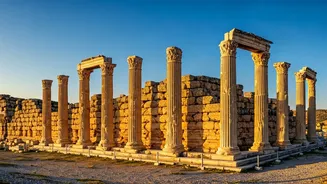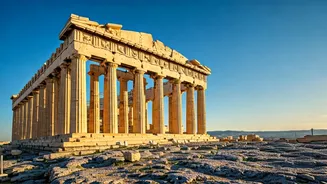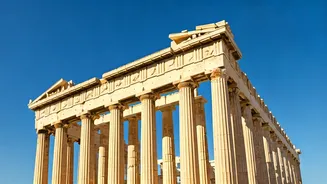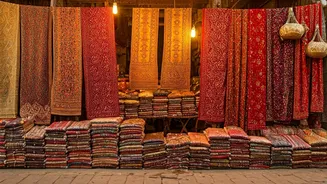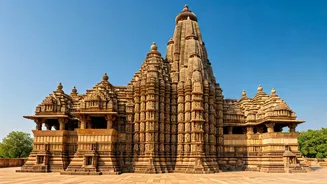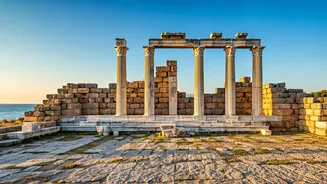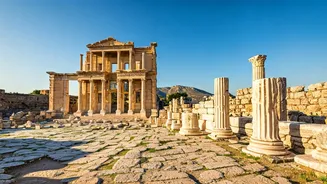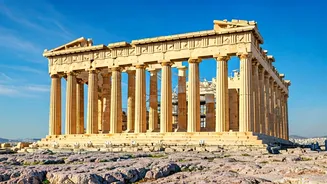Acropolis of Athens
The Acropolis, perched high above Athens, is perhaps the most iconic ancient site in Greece. It served as a religious and civic center, showcasing the architectural
and artistic prowess of the ancient Athenians. The Parthenon, a temple dedicated to the goddess Athena, stands as a symbol of classical architecture, its intricate details and imposing size a testament to the skills of its creators. The Propylaea, the monumental gateway, and the Erechtheion, with its famous Caryatids statues, further enhance the site's beauty. Exploring the Acropolis offers a profound experience, connecting visitors with the history, mythology, and artistry of ancient Greece. The Acropolis is a UNESCO World Heritage site, emphasizing its global significance.
Delphi: The Oracle
Delphi, nestled on the slopes of Mount Parnassus, was considered the center of the world by the ancient Greeks. Famous as the home of the Oracle of Delphi, it drew pilgrims from across the Greek world seeking prophecies and guidance. The Temple of Apollo, the focal point of the site, hosted the oracle's pronouncements. The archaeological site also encompasses a stadium, a theater, and various treasuries built by different city-states to display their wealth. The Sacred Way, a pathway leading to the temple, was lined with monuments and offerings. Delphi remains a place of mystery and historical significance, offering insights into the religious beliefs and social structures of ancient Greece, along with stunning views.
Olympia: Birthplace
Olympia, located in the Peloponnese, is renowned as the birthplace of the Olympic Games. The site features the ruins of temples, athletic facilities, and other structures related to the games. The Temple of Zeus, once housing a massive statue of the god, stands as evidence of ancient grandeur. The Stadium, where the games were held, could accommodate tens of thousands of spectators. Other important structures include the gymnasium and the Palaestra, used for training. Olympia provides a vivid picture of the athletic competitions, religious rituals, and social life that defined the ancient Olympic Games, fostering a sense of competition and camaraderie among Greeks. The site's significance extends beyond sport, embodying the cultural ideals of ancient Greece.
Knossos: Minoan Palace
Knossos, on the island of Crete, is the most important site of the Minoan civilization. The palace complex, with its intricate layout, vibrant frescoes, and advanced architectural design, represents the peak of Minoan culture. The palace included numerous rooms, courtyards, and corridors, suggesting a complex societal structure. Frescoes depict scenes of daily life, religious rituals, and natural imagery, offering valuable insights into Minoan artistic and cultural practices. Knossos also features unique architectural elements such as the 'throne room,' hinting at the palace's role as a center of power and ritual. Exploring Knossos reveals the ingenuity and sophistication of the Minoan civilization, which flourished centuries before the rise of classical Greece.
Ephesus: Ancient City
Ephesus, located in present-day Turkey, was a major city in the ancient Greek world, later flourishing under Roman rule. The site features well-preserved ruins, including the Library of Celsus, the Temple of Artemis (one of the Seven Wonders of the Ancient World), and a large theater that could seat thousands of people. The city was a significant commercial and cultural center. Walking through the streets of Ephesus provides a sense of the daily life, urban planning, and architectural achievements of the ancient world. Visitors can see the remains of houses, shops, and public spaces, giving a vivid impression of the city's prosperity and importance, making it a crucial historical location.
Mycenae: Citadel
Mycenae, a fortified citadel in the Peloponnese, is a key site of the Mycenaean civilization, which flourished before the classical era. The site is known for its cyclopean walls, impressive engineering, and the Lion Gate, a monumental entrance. The Treasury of Atreus, a large beehive tomb, is one of the most remarkable features, demonstrating the wealth and architectural skills of the Mycenaeans. Excavations have uncovered royal tombs, palaces, and other structures, revealing insights into the military might, social hierarchy, and artistic traditions of this early Greek civilization. Mycenae provides important context for understanding the evolution of Greek society and the transition from the Bronze Age to the Iron Age.
Delos: Sacred Island
Delos, a small island in the Cyclades, was a sacred sanctuary and a major religious center in ancient Greece. The site features a variety of temples, sanctuaries, and public buildings dedicated to Apollo and other deities. The island was a prominent trading port and a significant center for the slave trade, contributing to its prosperity. Exploring Delos provides insights into the religious practices, social dynamics, and economic activities of the ancient Greeks. The Terrace of the Lions, the Temple of the Delians, and various residential quarters offer a look into the rich history and cultural significance of this island. Delos's preservation as a UNESCO World Heritage site underscores its enduring importance.
Ancient Agora: Hub
The Ancient Agora in Athens was the center of public life, politics, and commerce in ancient Athens. The site includes the remains of temples, government buildings, shops, and workshops. The Stoa of Attalos, a reconstructed building, now houses a museum. The Agora served as a marketplace, a meeting place, and a forum for political and philosophical discussions. Walking through the Agora gives insight into the daily lives, social structures, and intellectual pursuits of the ancient Athenians. Key features include the Temple of Hephaestus and the Bouleuterion, providing a snapshot of the Athenian democratic experiment and its cultural legacy, highlighting its lasting influence.
